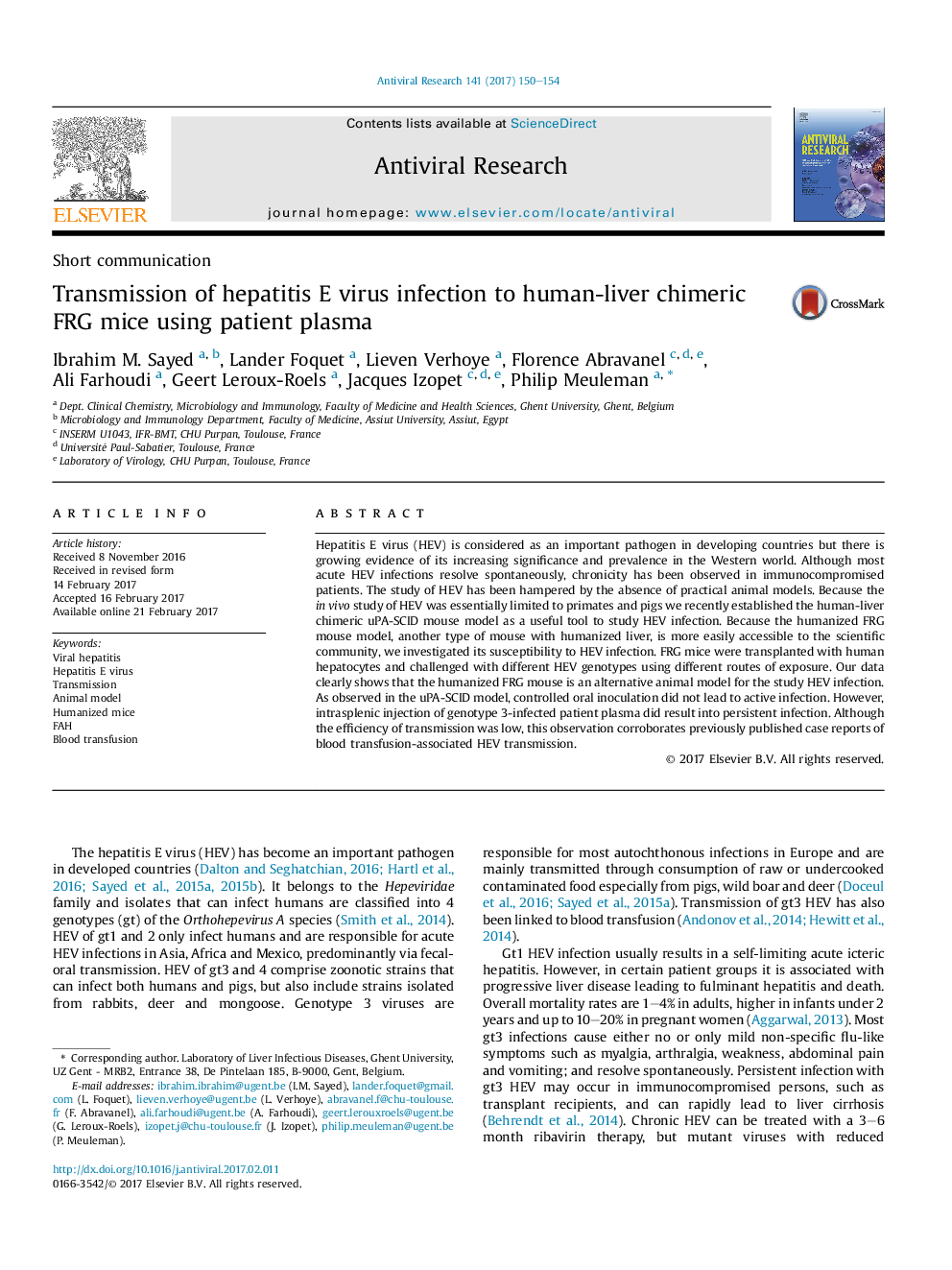| Article ID | Journal | Published Year | Pages | File Type |
|---|---|---|---|---|
| 5551808 | Antiviral Research | 2017 | 5 Pages |
â¢Humanized FRG mice are susceptible to HEV infection of different genotypes.â¢Humanized FRG mice can be infected with patient plasma containing HEV of genotype 3.â¢Oral inoculation does not seem to be an effective route to establish an HEV infection in human liver chimeric mice.â¢Humanized FRG mice are a valuable model to study HEV infection in vivo and evaluate novel antiviral drugs.
Hepatitis E virus (HEV) is considered as an important pathogen in developing countries but there is growing evidence of its increasing significance and prevalence in the Western world. Although most acute HEV infections resolve spontaneously, chronicity has been observed in immunocompromised patients. The study of HEV has been hampered by the absence of practical animal models. Because the in vivo study of HEV was essentially limited to primates and pigs we recently established the human-liver chimeric uPA-SCID mouse model as a useful tool to study HEV infection. Because the humanized FRG mouse model, another type of mouse with humanized liver, is more easily accessible to the scientific community, we investigated its susceptibility to HEV infection. FRG mice were transplanted with human hepatocytes and challenged with different HEV genotypes using different routes of exposure. Our data clearly shows that the humanized FRG mouse is an alternative animal model for the study HEV infection. As observed in the uPA-SCID model, controlled oral inoculation did not lead to active infection. However, intrasplenic injection of genotype 3-infected patient plasma did result into persistent infection. Although the efficiency of transmission was low, this observation corroborates previously published case reports of blood transfusion-associated HEV transmission.
